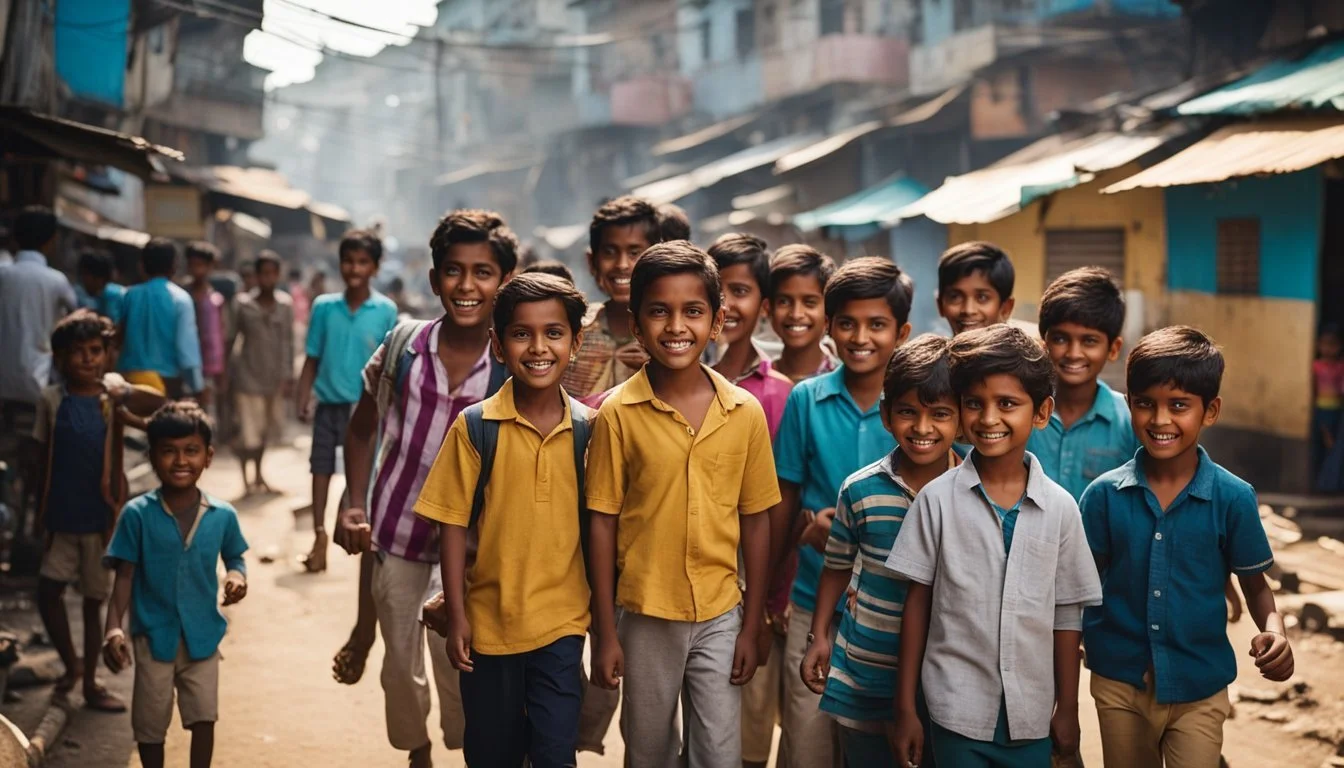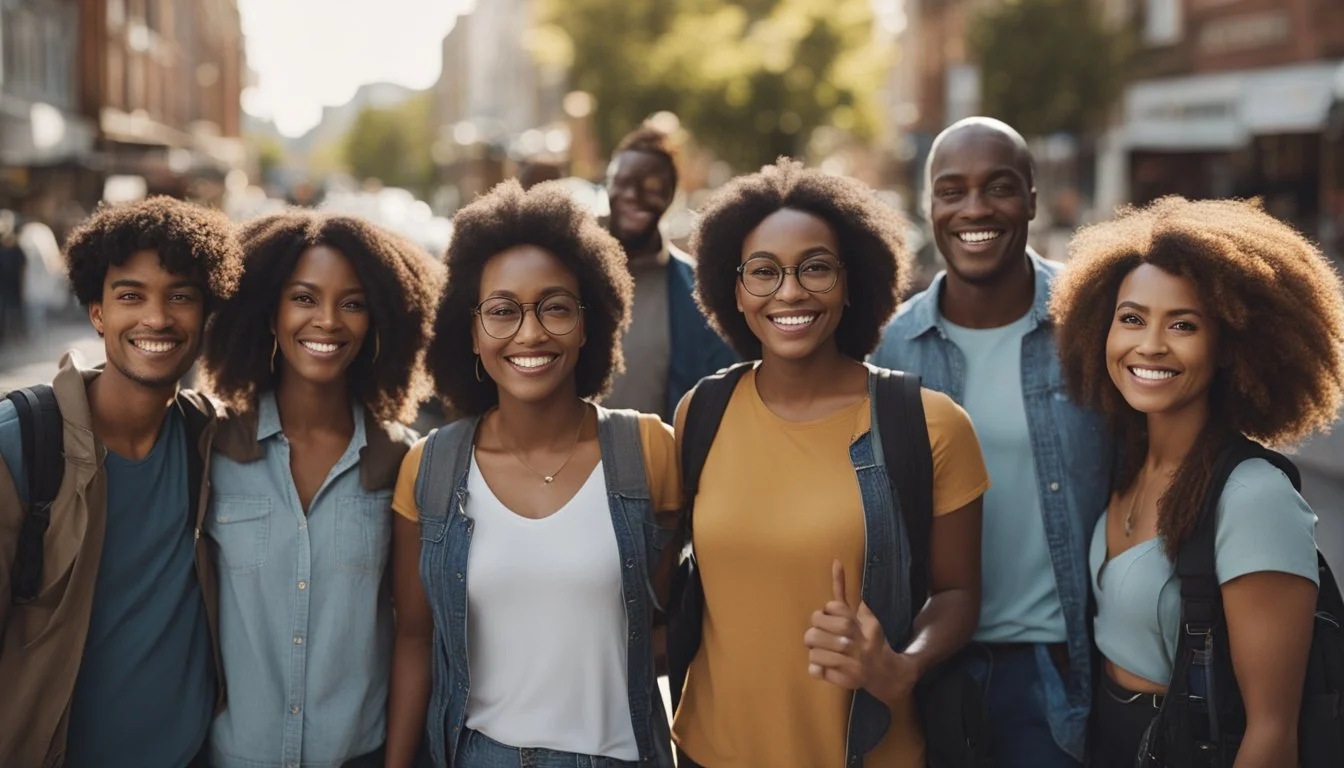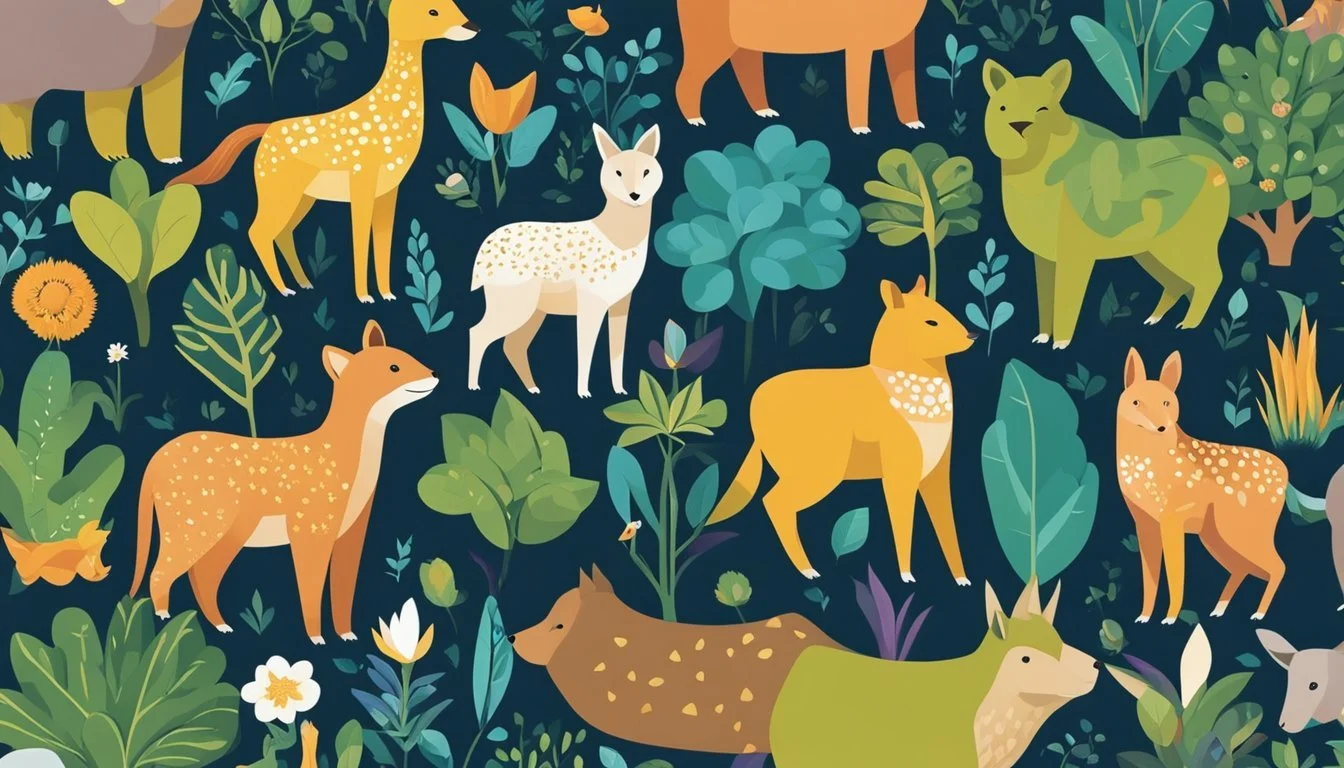9 Documentaries That Highlight the Power of Love in Community Building
Inspiring Stories of Unity
Documentaries have a unique ability to shed light on important social issues and inspire change. By focusing on the power of love in community building, these films showcase how compassion and connection can transform neighborhoods, cities, and even entire societies.
These nine documentaries offer compelling narratives that demonstrate the profound impact of love and unity on community development. From grassroots initiatives to large-scale movements, they highlight individuals and groups working tirelessly to create positive change through acts of kindness, cooperation, and mutual support. Viewers will gain insight into the transformative potential of love as a driving force for social progress and community cohesion.
1) "Won't You Be My Neighbor?" - Fred Rogers (2018)
"Won't You Be My Neighbor?" is a heartwarming documentary that explores the life and legacy of Fred Rogers, the beloved host of "Mister Rogers' Neighborhood." Directed by Morgan Neville, the film showcases Rogers' dedication to promoting kindness and understanding through children's television.
The documentary features rare archival footage and interviews with Rogers' family, friends, and colleagues. It delves into his innovative approach to addressing complex topics like death, divorce, and racism in ways that young children could comprehend.
Rogers' unwavering commitment to treating children with respect and dignity shines through in the film. His gentle demeanor and sincere interest in others exemplify the power of love in building strong communities.
The film highlights Rogers' famous testimony before the U.S. Senate in 1969, where he successfully advocated for PBS funding. This pivotal moment demonstrates his ability to touch hearts and minds beyond his television audience.
"Won't You Be My Neighbor?" serves as a poignant reminder of the lasting impact one person can have when they choose to spread love and compassion in their community.
2) "The Biggest Little Farm" - John Chester (2018)
"The Biggest Little Farm" chronicles the journey of John and Molly Chester as they leave city life behind to pursue their dream of sustainable farming. The documentary showcases their efforts to transform 200 acres of barren land in Ventura County, California into a thriving, biodiverse ecosystem.
Over eight years, the Chesters face numerous challenges, from unpredictable weather to pest infestations. They persevere, implementing innovative farming techniques and embracing the complexities of nature.
The film highlights the power of community as the Chesters collaborate with experts, volunteers, and neighboring farmers. Their shared passion for sustainable agriculture creates a support network crucial to the farm's success.
Through stunning cinematography, the documentary captures the beauty of the natural world and the intricate relationships between plants, animals, and humans. It illustrates how love for the environment and dedication to a shared vision can foster a sense of community and purpose.
"The Biggest Little Farm" serves as an inspiring testament to the transformative power of sustainable farming and the importance of working in harmony with nature.
More information on The Biggest Little Farm
3) "Living on One Dollar" - Chris Temple (2013)
"Living on One Dollar" follows four American college students as they attempt to survive on $1 per day in rural Guatemala. Chris Temple, along with his friends Zach Ingrasci, Sean Leonard, and Ryan Christoffersen, embarked on this challenging experiment for two months.
The documentary provides a raw look at extreme poverty, showcasing the daily struggles faced by those living in such conditions. The friends grapple with hunger, illness, and financial stress while trying to understand the realities of life below the poverty line.
Through their experiences, the film highlights the resilience and ingenuity of the local community. It demonstrates how people in impoverished areas support each other and find creative solutions to their challenges.
"Living on One Dollar" not only raises awareness about global poverty but also inspires viewers to take action. The project has since evolved into a larger initiative to combat poverty and promote understanding across socioeconomic divides.
More information about "Living on One Dollar"
4) "Born Into Brothels" - Zana Briski (2004)
"Born Into Brothels" shines a light on the transformative power of art and community in one of Kolkata's most challenging environments. Zana Briski, a photographer, enters the red-light district of Sonagachi to document the lives of sex workers.
During her time there, Briski forms connections with the children of prostitutes. She provides them with cameras and photography lessons, offering a creative outlet and new perspective on their surroundings.
The documentary follows these young photographers as they capture their world through their own eyes. Their images reveal both the harsh realities of their lives and moments of joy and beauty.
Through Briski's efforts, the children gain not only artistic skills but also a sense of self-worth and possibility. The film showcases how this small community of young artists supports and inspires each other.
"Born Into Brothels" demonstrates how love, expressed through art and education, can create positive change even in the most difficult circumstances. It highlights the resilience of children and the impact of compassionate community-building efforts.
More information on "Born Into Brothels"
5) "Human Flow" - Ai Weiwei (2017)
"Human Flow" is a documentary that explores the global refugee crisis. Directed by renowned Chinese artist Ai Weiwei, the film offers a powerful look at mass human migration across 23 countries.
Ai Weiwei and his team interviewed over 600 refugees, aid workers, politicians, and others to create this comprehensive portrait. The film captures both the immense scale of displacement and intimate human stories.
"Human Flow" features striking visuals that showcase both the beauty and harsh realities of refugee journeys. Ai Weiwei's artistic sensibility shines through in the cinematography and framing of scenes.
The documentary avoids easy answers, instead aiming to foster empathy and understanding. It highlights how love and compassion emerge even in dire circumstances as communities form and support each other.
More information on "Human Flow"
6) "The Square" - Jehane Noujaim (2013)
"The Square" captures the Egyptian Revolution that began in 2011. Jehane Noujaim's documentary follows a group of activists as they protest in Cairo's Tahrir Square.
The film showcases the power of community in the face of oppression. It depicts protesters from diverse backgrounds uniting for a common cause, demonstrating love for their country and fellow citizens.
Noujaim's camera provides an intimate look at the revolution's human element. The audience witnesses the bonds formed between activists as they face danger and uncertainty together.
"The Square" highlights how shared struggles can create lasting connections. The film illustrates the strength found in unity and the transformative power of collective action.
Through its portrayal of solidarity and sacrifice, "The Square" reveals how love for community can drive social change. It stands as a testament to the resilience of the human spirit in times of crisis.
More information on "The Square"
7) "The True Cost" - Andrew Morgan (2015)
"The True Cost" exposes the hidden impacts of the fast fashion industry on people and the planet. Directed by Andrew Morgan, this documentary takes viewers on a global journey from glamorous runways to impoverished garment factories.
The film highlights the stark contrast between the decreasing cost of clothing and the increasing human and environmental toll. It features interviews with influential figures like Stella McCartney and Vandana Shiva, offering diverse perspectives on the issue.
Morgan's documentary sheds light on the harsh working conditions and low wages of garment workers in developing countries. It also examines the environmental consequences of fast fashion, including pollution and pesticide contamination.
"The True Cost" challenges viewers to consider the real price of their clothing purchases. It encourages a more conscious approach to fashion consumption and advocates for ethical and sustainable practices in the industry.
More information about "The True Cost" on Wikipedia
8) "13th" - Ava DuVernay (2016)
"13th" is a groundbreaking documentary that examines the relationship between race, justice, and mass incarceration in the United States. Directed by Ava DuVernay, the film takes its name from the 13th Amendment to the U.S. Constitution.
The documentary explores how the prison system has become a modern form of slavery. It traces the history from the end of the Civil War to the present day, showcasing how systemic racism has persisted through different eras.
DuVernay employs a mix of archival footage and interviews with activists, politicians, and scholars. This approach provides a comprehensive look at the issues surrounding mass incarceration and its disproportionate impact on African Americans.
The film highlights how the criminal justice system has been used as a tool for racial control. It examines policies like the "war on drugs" and mandatory minimum sentencing, which have contributed to the explosive growth of the prison population.
"13th" serves as a powerful call to action, urging viewers to confront the realities of racial inequality in America's justice system.
9) "The Act of Killing" - Joshua Oppenheimer (2012)
Joshua Oppenheimer's documentary "The Act of Killing" takes an unconventional approach to exploring the Indonesian mass killings of 1965-66. The film focuses on former death squad leaders who participated in the atrocities.
Oppenheimer invites these men to reenact their crimes through various cinematic styles. This unusual method provides a chilling look into the minds of those who committed heinous acts.
The documentary challenges viewers to confront the complexities of human nature and the lasting effects of violence on individuals and societies. It raises questions about accountability, memory, and the construction of historical narratives.
"The Act of Killing" received critical acclaim for its innovative approach and unflinching examination of a dark chapter in Indonesian history. The film garnered numerous awards and nominations, including an Academy Award nomination for Best Documentary Feature.
More information on "The Act of Killing"
The Role of Love in Community Engagement
Love serves as a powerful force in fostering strong, vibrant communities. It cultivates trust, empathy, and mutual understanding among community members. Love also acts as a catalyst for positive social change, inspiring people to work together towards common goals.
Building Trust Through Compassion
Compassion forms the foundation of trust within communities. When individuals show genuine care for one another, it creates an atmosphere of safety and belonging. This environment encourages open communication and collaboration.
Community members who feel valued are more likely to participate in local initiatives. They volunteer their time, share resources, and support neighbors in need. Acts of kindness, no matter how small, ripple outward and strengthen social bonds.
Compassionate leadership also plays a crucial role. When community leaders demonstrate empathy and understanding, it sets a positive example for others to follow. This approach fosters inclusivity and encourages diverse perspectives to be heard and respected.
Love as a Catalyst for Social Change
Love motivates people to take action for the greater good. It inspires individuals to look beyond their own interests and consider the wellbeing of the entire community. This collective mindset is essential for addressing complex social issues.
Community-driven projects often stem from a place of love and concern for others. Examples include neighborhood clean-up efforts, food drives, and mentorship programs. These initiatives not only improve living conditions but also strengthen social connections.
Love can also bridge divides and heal conflicts within communities. When people approach disagreements with empathy and a willingness to understand, it becomes easier to find common ground. This approach leads to more effective problem-solving and long-lasting solutions.
Emotional Bonds and Their Impact on Community Development
Emotional connections form the foundation of strong, resilient communities. These bonds foster trust, cooperation, and a shared sense of purpose among community members.
Creating Lasting Connections
Documentaries often showcase how emotional ties develop through shared experiences. Films like "Hoop Dreams" depict the bonds formed among young athletes and their families as they pursue their goals. These connections extend beyond the basketball court, creating a support network within the community.
Community events and gatherings play a crucial role in fostering relationships. Local festivals, neighborhood cleanups, and community gardens provide opportunities for residents to interact and form meaningful connections.
Shared challenges can also bring people together. Documentaries highlighting communities facing adversity often reveal the strength of emotional bonds that emerge during difficult times.
Strengthening Community Resilience
Strong emotional connections contribute to a community's ability to withstand and recover from setbacks. Documentaries exploring natural disasters or economic hardships demonstrate how tight-knit communities often bounce back more quickly.
Mutual support systems arise from these emotional bonds. Neighbors help each other with childcare, share resources, and provide emotional comfort during tough times.
These connections also foster a sense of collective responsibility. Community members become more invested in local issues and are more likely to participate in decision-making processes that affect their neighborhood.
Emotional bonds encourage long-term commitment to a community. Residents who feel deeply connected are less likely to move away, contributing to the stability and continuity of the neighborhood.








